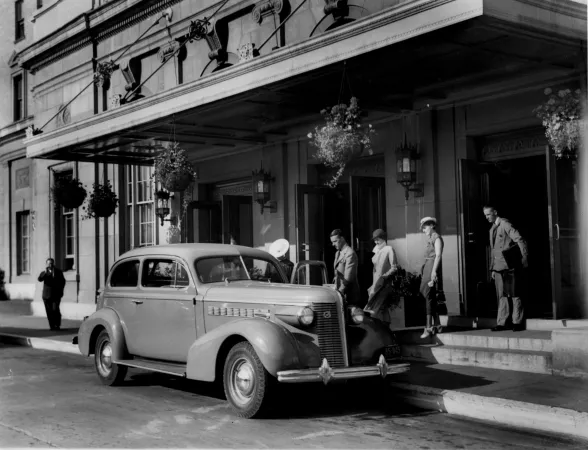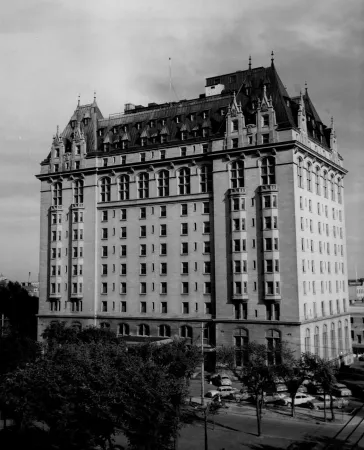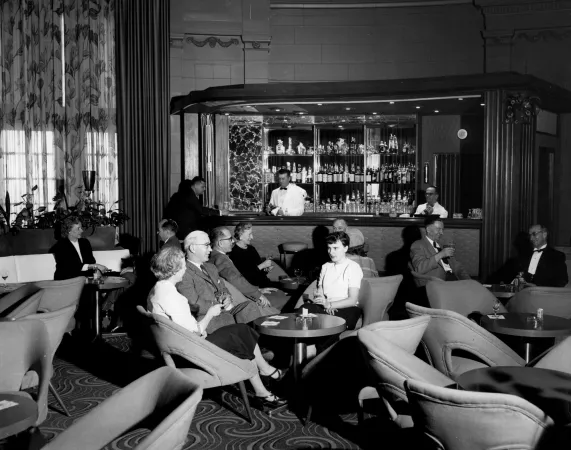The Canadian Railway Hotels

This text has been adapted from the Picturing the Past website, developed by the Canada Science and Technology Museum in 2006.
In addition to building the rail system across the country, Canada’s two national railway companies (Canadian National Railways and the Canadian Pacific Railway) built a string of grand hotels in the major cities and resort areas of the nation.

Jasper Lodge Lounge, Alberta, 1954.
Many of these are still operating today, and their styles reflect the ideal of grandiose elegance marketed to potential travelers. In their time, they were among the leading hotels in the world, and set the standards for what a grand hotel “should be” in the eyes of visitors.

The Chateau Frontenac, Quebec City, 1957
Some of these structures have defined cities—try to imagine the skyline of Quebec City without the remarkable outline of the Chateau Frontenac. In many areas, the hotel was the predominant building in terms of its architectural grandeur, overall size and central location. In resort areas, such as Banff and Jasper in the Rockies, Minaki in northern Ontario and Montebello in western Quebec, the hotel became the center of all subsequent local development and the raison d’etre for the community. The railways and their hotel systems were key to the establishment of the tourism industry and its contribution to the modern Canadian economy.

Roundhouse at the railway yard with the Royal York Hotel in the background, as seen from the waterfront. Toronto, ON, 1933
The centrepiece of the whole system was Toronto’s Royal York Hotel. Canadian Pacific Railway starting building it in 1927 and, when it opened in 1929, it was the tallest building in the Commonwealth. The Royal York became known as a city within a city. It stood twenty-eight floors high, and this architectural achievement was outfitted with mechanical genius and opulence never before seen in Toronto. It boasted 1048 rooms—each with a radio, private shower and bathtub.
Royal York also included a twelve-bed hospital, a 12,000-book library and ten ornate passenger elevators. The Concert Hall featured a full stage and a mammoth pipe organ that weighed 45,000 kg (and incorporated 480 km of copper wire), which surpassed anything else in Canada. There was a glass-enclosed roof garden, the largest hotel kitchen in Canada (the bakery could produce more than 15,000 French rolls a day), a twenty-meter-long switchboard staffed by thirty-five telephone operators, a bank, and a golf course (now known as St George Golf & Country).
Other grand hotels built by the railways are featured in the slideshow below. All of these are still operating today and most have been painstakingly restored to reflect their original elegance.
The hotels are documented in a number of Ingenium's archival holdings, including the Canadian National Railway and Mattingly photo collections. Visit our new Digital Archives portal for more photographs.













































